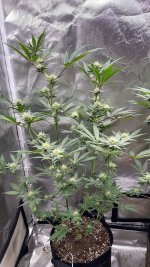Asentrouw
Well-known member
I guess these worm castings have to be fresh?Check out : Recharge, photosynthesis plus, em-1
simplest way is to add worm castings or worm tea
Most sold here are a dried form, with the worms filtered out.
And what would be the best way to make a worm tea? I do have a wormbin, but it's currently not full/finished yet. Just put some fresh wormcompost in with a bubbler for a few days?
I prefer a cheap natural way to introduce soil life over too expensive baggies and bottles with microlife...



